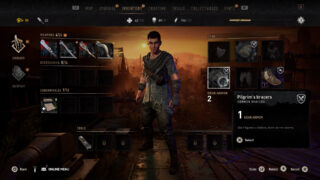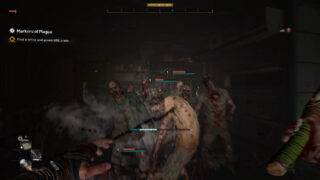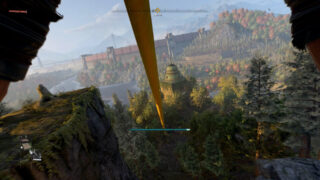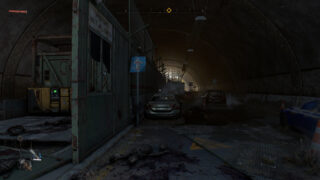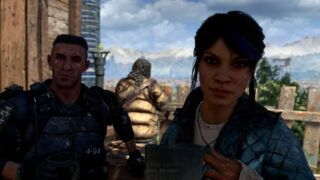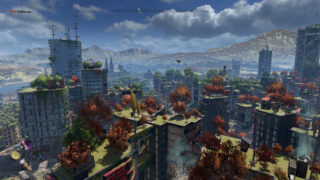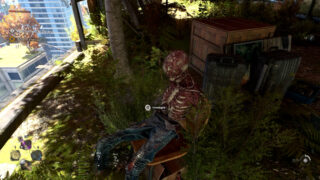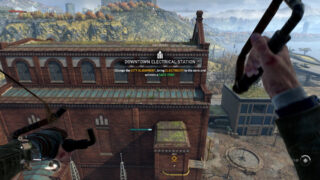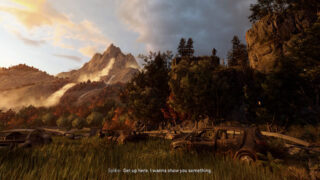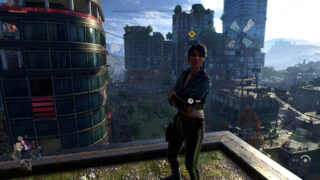Review: Dying Light 2 is an uninspiring zombie-adventure saved by excellent parkour
What starts off as a tense fight for survival in a compelling game world quickly turns into a fairly generic open-world game
- Game director
- Adrian Ciszewski
- Key Credits
- Jerrold Brown (Writer), Bartosz Kulon (Lead programmer)

At some point, around halfway through our journey with Dying Light 2: Stay Human, we realised that we weren’t playing a zombie game anymore.
Sure, if we looked down onto the street there would be plenty of the lifeless horde shambling about, but at that point, they posed such an insignificant threat to us that they might as well have been potted plants that we had to dodge out of the way of in order to get to the next mission.
What starts off as a tense fight for survival that encourages you to be deathly afraid of the dark quickly turns into a fairly generic open-world game, with some great mobility that happens to have zombies in it. Their presence, like a lot of things in Dying Light 2 just doesn’t matter.
Dying Light 2 is set some years after the events of the first game, with Haran, the fictional setting of the original, being referenced in the opening few minutes. You play as Aiden who heads to a new settlement to find answers about your mysterious past and your missing family. Your search is quickly thrown off as you’re plunged into the local politics of the survivors you encounter on your travels and it’s up to you to play a key role in the future of the region.
The game really wants you to believe that the choices you are making matter. It talks your ear off trying to convince you that soon you’ll be faced with a choice that will irrevocably change your experience. It implies that whichever fork in the road you choose will lead to an experience that’s unlike anyone else playing will have. Unfortunately, the reality is far more shallow.
While you are often choosing who lives and who dies, the game is structured in such a way that once you’ve come to the end of a questline and made that decision, your interaction which whoever you left alive is so limited that they might as well be dead. The game also gives you constant opportunities to go back on what you’ve just done, with basically every character you interact with being such a doormat that you can literally change your mind at every chance and it’s never commented on.
There’s a sequence in the middle of the game starring Clerks 2’s Rosario Dawson during which we were sure that we had done something that would irrevocably piss her off. A betrayal of trust that meant that we’d just sidelined one of the best characters in the game. However, any illusion that our choices matter were quickly subsided when she appeared at the end of the next mission with some flimsy excuse about how she “wouldn’t let us get killed alone” or some such justification why she was sticking around.
A lot of the environmental storytelling is obvious to the point of parody. At the start of the game, you search through an abandoned house, only to find a couple sitting out in the garden, having recently died. Sitting next to them is an A4 glossy printout of the two of them together, which serves as an almost comically unsubtle way for your character to find out who they were. It’s like the developer expected players to have the comprehension skills of a 5-year-old.
What can’t be faulted is the fantastic free-running system that makes getting across the city an absolute joy. It’s almost Mirror’s Edge-like in its use of the shoulder buttons to control things like jumping, swinging and wall-running. It takes a bit of time to unlock all of the tools in your arsenal, but once you do, it’s incredibly liberating to look at any obstacle in front of you and know that you have everything you need to get through it with ease.
“What can’t be faulted is the fantastic free-running system that makes getting across the city an absolute joy. It’s almost Mirror’s Edge-like in its use of the shoulder buttons”
This does somewhat emphasize how useless the zombies are, as they have absolutely no means of keeping up with you when you’re flying across rooftops (and even less so when you literally get a paraglider halfway through the game). The city is designed like a big adventure playground, with ramps and overturned cars set up as conspicuously as if they were designed for a combo line in a Tony Hawk level. The game wants you to forget it even has fast travel. You are the fast travel.
Dying Light 2 is also brilliant about getting you moving again. There are zip lines that shoot you back up on top of buildings all over the place. It doesn’t want you to be on the ground. This is, again, pretty at odds with the game’s main threat and makes the parkour, though excellent, feel like it’s from a completely different game.
The combat is a sluggish, melee-based experience which sees you inelegantly swinging bits of old shoddy metal or rusty pipe at the oncoming hoard. Not only is the combat itself not very fun, enemies feel like they have about 4 times as much health as they need to. They’re never a threat and you never feel overrun, it’s just time-consuming to whack them in the head over and over until they eventually fall down.
The weapon variety is also very uninspiring. Throughout our time with the game we found only a handful of interesting weapons, and while you can find some better equipment by completing a few of the sidequests, the actual loot you find around the world is lacking. It’s also extremely frustrating that enemies don’t drop their weapons when you kill them, so even if you hunt down a bandit with a cool axe of some kind, there’s little chance you’ll actually loot it from them once they’re dead.
Combat is also strangely unwieldy to control, there’s a focus on vaulting over enemies and crashing down onto other, which seems to encourage you to chain attacks, but it never works properly, and when you’re generally fighting in small rooms with low ceilings, using a combat system based on mobility feels hamstrung.
Dying Light 2: Stay Human feels like it lost its direction somewhere along the way. It begins as an interesting zombie game wherein the threat feels tangible, your character feels weak, and the world feels primed for a dynamic story. However, the further you get into the game, a lot of its early ideas feel sidelined for a generic zombie plot, uninspiring combat, and the absence of any kind of danger.
The freerunning is fantastic and it’s one of the most enjoyable open-world cities to explore in a long time, but any ambition of a truly dynamic experience where your actions can change everything fails to materialise.
Dying Light 2: Stay Human feels like it lost its direction somewhere along the way. It begins as an interesting zombie game wherein the threat feels tangible, your character feels weak, and the world feels primed for a dynamic story. However, the further you get into the game, a lot of its early ideas feel sidelined for a generic zombie plot, uninspiring combat, and the absence of any kind of danger.
- Great parkour mechanics
- Traversing the city is always fun
- Poor combat
- The illusion of choice
- Mediocre writing
